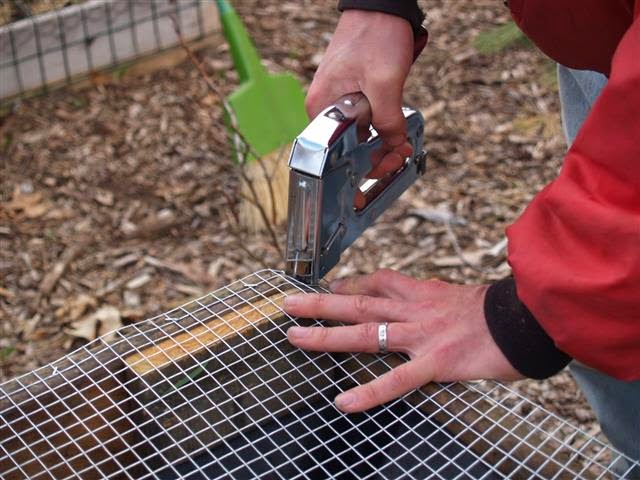We wanted to share some pictures of our blessings harvested from our garden.
 |
| Abundance of peas |
Due to the long cool spring, we harvested peas into July. It was our best harvest since we started gardening here. Another reason for our abundance was the process of chitting the seeds before planting. For more information on this process, check out our blog entitled, "Chitting my peas".
 |
| Timothy's shelled peas |
 |
| Icicle Radish (Diakon) and Detroit Dark Red Beets |
Putting up Swiss Chard is an easy process, just takes some time. First go pick as much as you can carry of nice green leaves. Shake off spiders, squish all caterpillars, remove any damaged parts of the leaves and soak in a sink full of cold water. This will wash off any dirt and make the rest of the spiders head for higher ground where you can catch them and toss them back in the garden.
 |
| Armload of Swiss Chard |
 |
| Mind the tree frog! |
This little guy sat there quietly while I pulled leaves off the plant all around him. It wasn't until I almost touched him that he twitched and startled me. He was very tiny and so cute! He stayed while I ran to get the camera but later was gone. I don't know where he lives but I enjoyed his visit.
 |
Modern edible art sculpture
|
I strip the leaf part off the thick stem and blanch it. I am left with the colorful stems of the rainbow chard to put in the compost. It was so pretty I took a picture of it. Art Prize next year? However, in an effort to use the whole leaf, perhaps next time we can run the stems through the juicer.
 |
| All that chard shrinks down to nice neat bags ready to go in the freezer. |
 |
| Red, black and golden raspberries |
I had read several years ago that garlic is very easy to grow and as long as you have the right type for your area, you can buy garlic from the grocery store and plant it. So I did. I got several organically raised garlic bulbs from the store and one from an organic farmer at the local farmer's market. I planted the largest cloves from my original selection the first year, and then from that harvest, again chose the largest cloves to replant. This harvest is from cloves planted in the fall of 2013 and is the third generation, second year grown in our garden. This is all from one garlic bulb. Each of the cloves is the size of an entire store bought bulb. The longer you replant the best cloves from your own saved garlic bulbs, the larger they can get along with greater acclamation to your particular soil and weather conditions.
 |
| Hardneck Garlic cloves from one bulb |
Our cucumbers were very prolific this year. Instead of planting the seeds in the ground, I started them in small pots which I think helped with germination. After transplanting them and training them to climb up the fencing on the south end of the beds, they did very well. We had several different varieties which produced at different times. Also, our cucumbers seemed to like the cool conditions this spring and early summer and did not succumb to cucumber wilt as quickly as they have in past years. Several of our friends also reported having a great cucumber year. The tomatoes weren't as happy.
 |
| Zucchinis and cucumbers with a few tomatoes |
I usually grow the onions around the perimeter of a bed with other plants on the inside of the ring. This has worked okay for me in the past, but this year they did not grow as well overall. We have several hypothesis of the what might have caused this problem. Perhaps the cooler temperatures as mentioned before were a factor, as our daytime temps were in the low 70s and the nights often dropped into the 50s. We had several varieties as well with some of them started from seed and others planted from sets. The sets were planted around the shorter pepper plants and the seeded ones in the tomato bed which might have been shaded out to the point that they suffered. Because of all the different factors, it is hard to know for sure what the main issue was. Regardless, next year we will probably not plant onions in the shade of the giant tomato plants.
 |
| White and yellow onions ready for braiding |
 |
| Day's harvest |
My favorite tomato that we grew this year was a Purple Cherokee Heirloom tomato. It split very easily but had big gorgeous deep reddish purple fruits with green striped tops and tasted wonderful. I have in the past been disappointed with how our Brandywine tomatoes tasted but this one was everything I love in a great tasting tomato. We made some excellent toasted cheese, lettuce and tomato sandwiches with it. I will definitely grow this one again and try to save some seed next year.
 |
| Tomatoes! |
 |
| Lovely Food to eat |
 |
| Cabbage brains |
One key to having a good harvest is to grow a variety of crops and within those crops, grow several different kinds, because you never know how the weather conditions will affect the growing season from year to year. While some of our crops did wonderfully, others did not overwhelm us. I was hoping to be buried in tomatoes (24 plants) and peppers (18 plants), but sadly we didn't end up with enough to make as much salsa as we wanted. So basically, don't put all your eggs in one basket, be grateful for what you do harvest and go to the farmer's market to get the rest!
.JPG)
.JPG)
.JPG)
.JPG)
.JPG)
.JPG)
.JPG)
















































